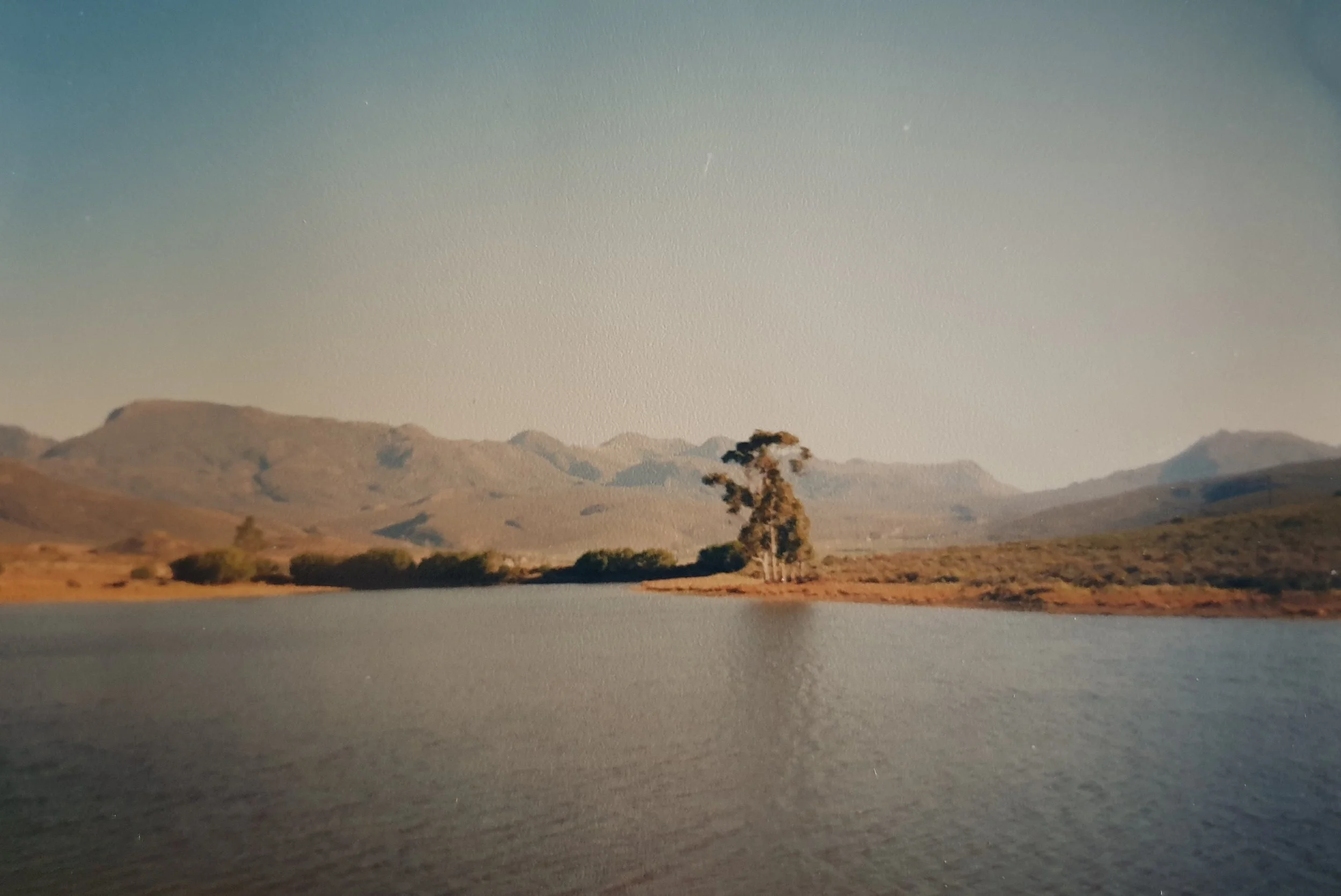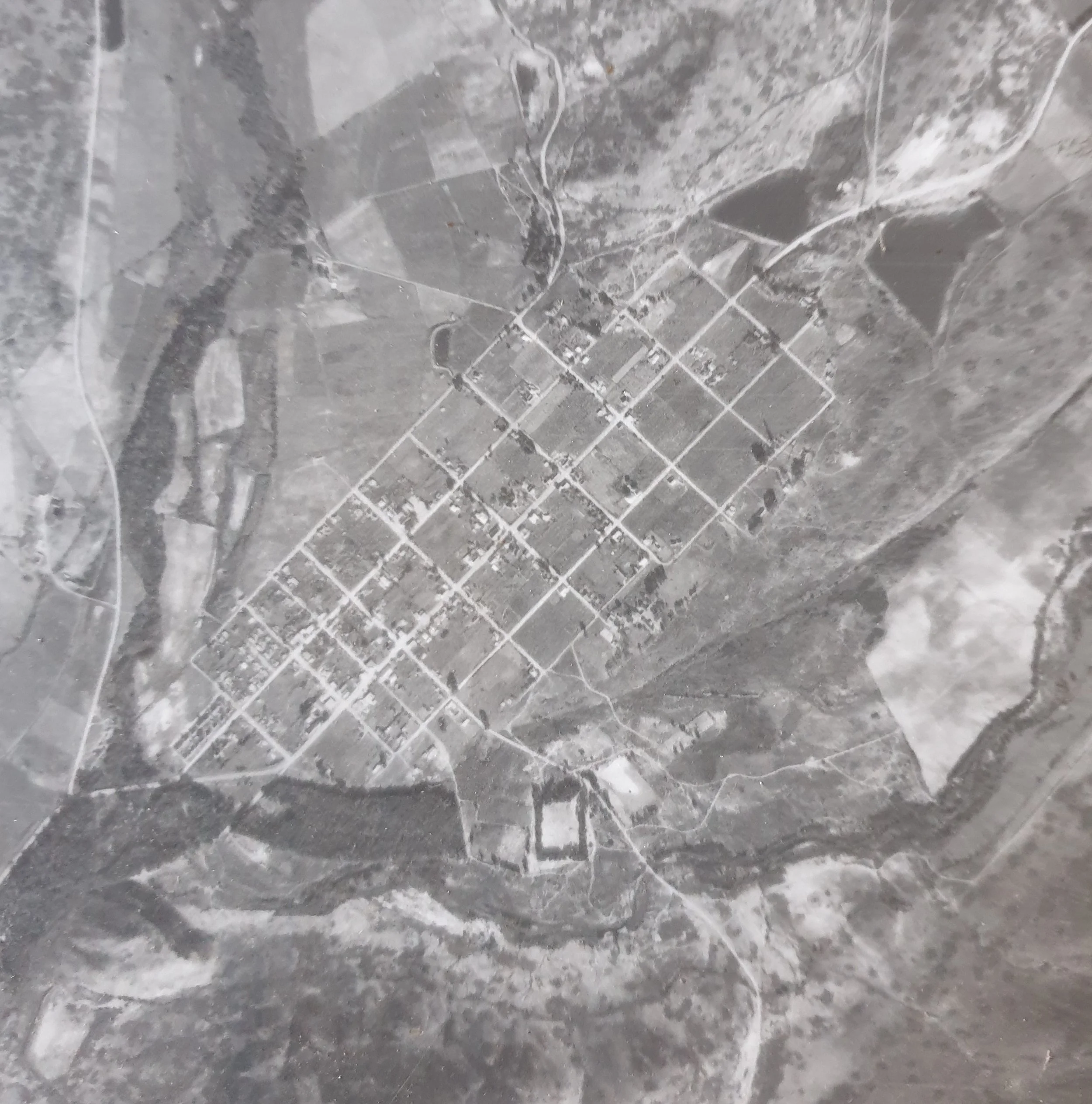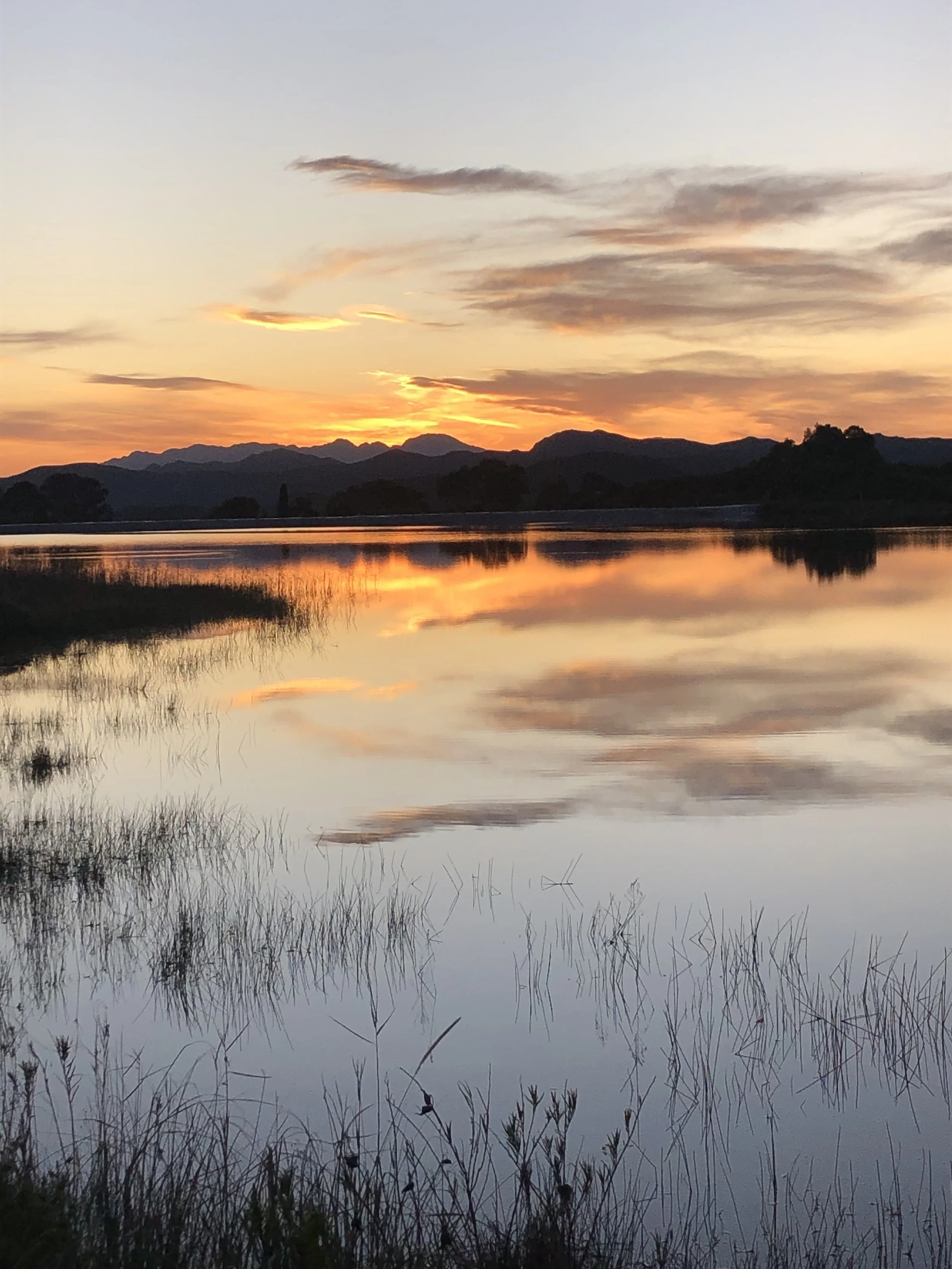
LEIWATER LEGACY
The Houtbaai River starts life from precipitation and rain falling in a deep kloof, high in the Riviersonderend Mountains. This water gains momentum as its flows through the pristine fynbos that flourishes in the well-watered highlands. The river has been channelled into a well-organised gravity-fed system. Drinking water is fed to the processing plant, while irrigation water crosses the main road to be stored in the big Vaal Dam.
Jane Banks recounts that in 1988:
…the sloots used to run all day long in the winter, with violets hanging over the edge.
Tannie Marie Manns was the leiwater sloot controller for over 40 years. Her job was to ensure that everyone got their fair and equal share of the water allocation. She is remembered for being ‘a larger-than-life character, teller of tales, sometimes grave-digger and coffee addict’. Before Tannie Manns was appointed, village fights over the ‘theft’ of minutes from neighbours’ water allocation were rife, with several cases making it all the way to the Cape High Court.
Marie was not only a leiwater sloot controller and cherished member of McGregor, but at times also served as a gravedigger. She was a clairvoyant, too, who could see spirits and had many tales of seeing the spirit of a villager walking down the street, or being in the garden of their beloved.
Christine and Peter Lawley:
When she filled our dam and had the water running nicely between the apricot trees, she would come and sit on our stoep and await her cup of coffee and biscuits. And then we could talk…Marie was able, since childhood, to see the ghosts of people who had crossed over. She believed in the importance of prayer for those who had difficulty accepting that they had died.
These are two of her accounts:
6.30 on a dark, still July morning. Freezing temperature, a light wind blowing from the snow-capped peaks of the surrounding mountains. A lone figure trudges up Voortrekker Street, spade over her shoulder, her limp evidence of a painful rheumatic leg. A shadowy figure crosses her path, and Marie stops and asks, ‘Paula, why are you wandering about – you must rest now’. She notes that it is a month since this villager passed on.
Once she’s opened the dam sluice gate, Marie heads across to the Mill property and, sure enough, there’s another regular, a soul who sits on the steps of the Old Mill house in the early morning. ‘Bennie’ tells her that the property once belonged to him. His wife didn’t allow alcohol in their house so he kept his stash of bottles in the watermill.
LEIWATER
Oude Molen, McGregor’s first mill, situated in upper Long Street beneath some giant blue-gum trees. This building sadly lost its exterior waterwheel but apart from that has largely been unaltered. It pre-dates the village’s establishment, and most likely formed part of the original farm Over-den-Berg, which received its water from a dam built before 1819. The wheel was turned by water rushing down from a weir above Rhebokskraal, where the furrow is still to be seen today. The small mill (only 5m x 4m) ground wheat into flour for local farmers.
With more people settling in Lady Grey, the need grew for a larger mill. The second mill is at the top of Mill Street just below the Vaal Dam. It is still intact, with a well-preserved mill-wheel and machinery. The mill was worked by Alwyn Brönn up until the 1930s but then fell into disuse.
WATER MILLS
The first dam was built prior to 1819 by Jonathan Groenewald, the Free Burgher who had a grant over the farm Over-den-Berg.
When Over-den-Berg was sold to Jacob Stephanus Naude in 1856, and the land subdivided into 30 plots, the village of Lady Grey was granted the right to 3¾ days of water per week from the Houtbaai River. At that time, the river flowed down furrows in Long Street, which was then the main road. Drinking water had to be scooped out with buckets and as this source declined during the village’s long, hot summers, a better solution was needed. Residents then built the Rooi Dam by hand, using wheelbarrows, picks and shovels. Unbaked bricks for construction were made with clay from the dam’s excavation.
Desiree Barry:
They took spades and picks and wheelbarrows, my grandfather told me, and dug the Rooi Dam, the one closest to the village on the left going up the main road. Donkeys helped humans...
Village smallholdings were large and sparse. My grandfather’s block was near the cemetery, and planted to lucerne and vegetables. His leiwater allocation was assigned to the ungodly hour of 3am, which meant very early rising, as, with lighted lantern, he received his weekly ration... during the decade of the 1920’s
In those days this water was free, as allocations were registered on deeds of sale and the rights passed on to subsequent owners.
Continued frustration with the water situation prompted the formation of the McGregor Irrigation Board, which was appointed in February 1911 in accordance with Irrigation Law No. 32 of 1906, particularly clause 46. However, by 1912, the system was still not working efficiently, and it was decided to construct a second dam on the other side of the road from the Rooi Dam. Officially this is known as the Vaal Dam, but it is more commonly referred to as the leiwater dam.
Martin and Amelia Munnik recall water access from the early days:
There was no inside tap. You had to go to a tap on the corner of the street – there was one where Green Gables is now – and we would carry it back in two buckets supported by a stick. The leiwater has been going ever since McGregor was established, and it belongs to the erf-holders, who bought their allocation along with their land. The Municipality has no water rights; it only administers them.















